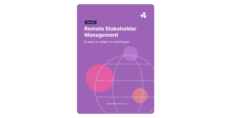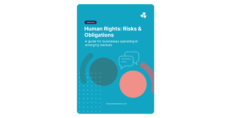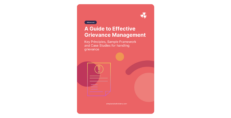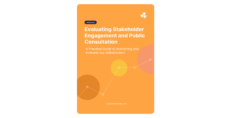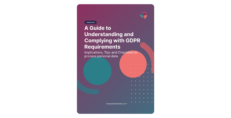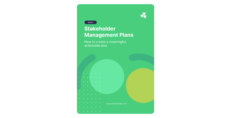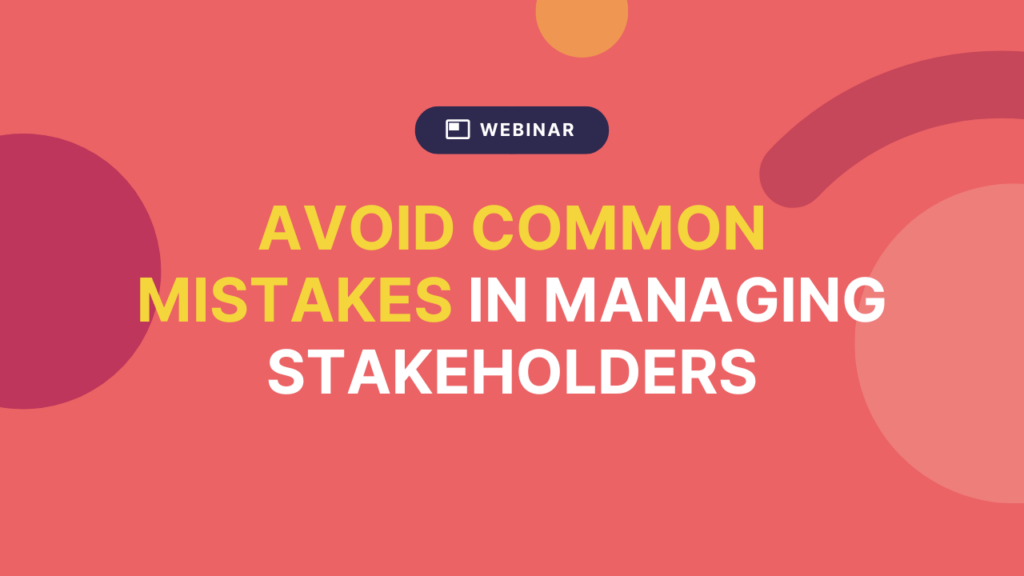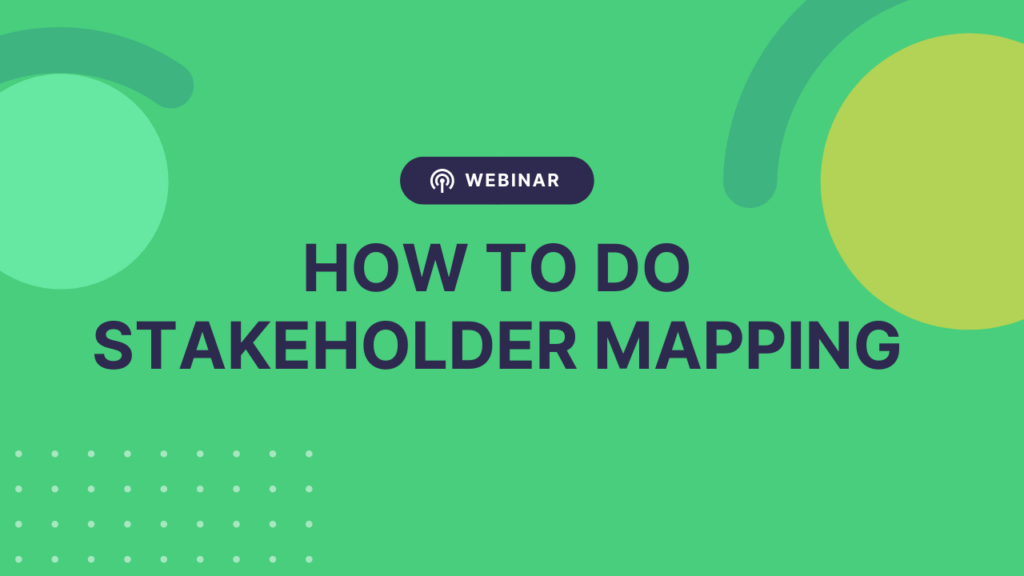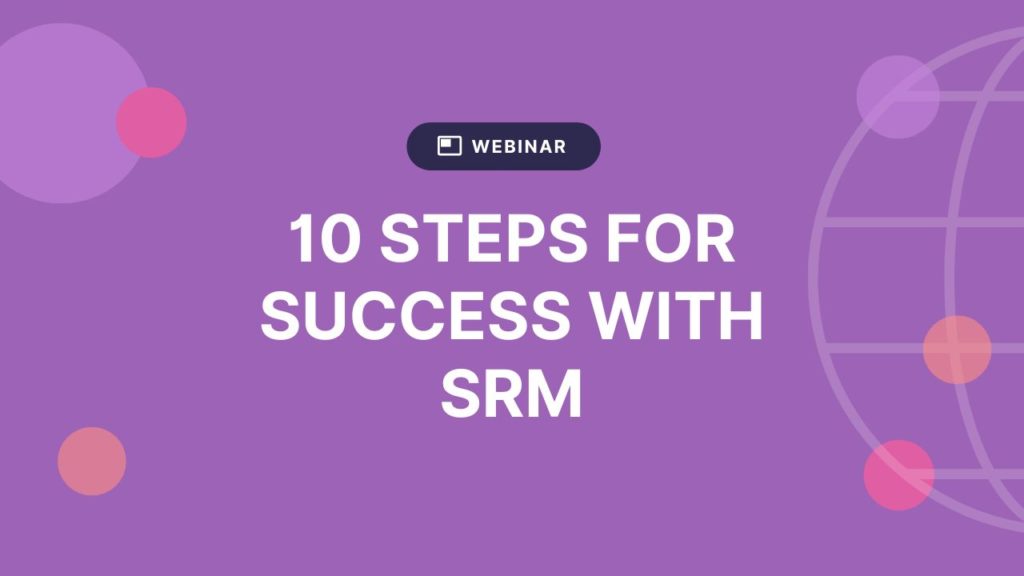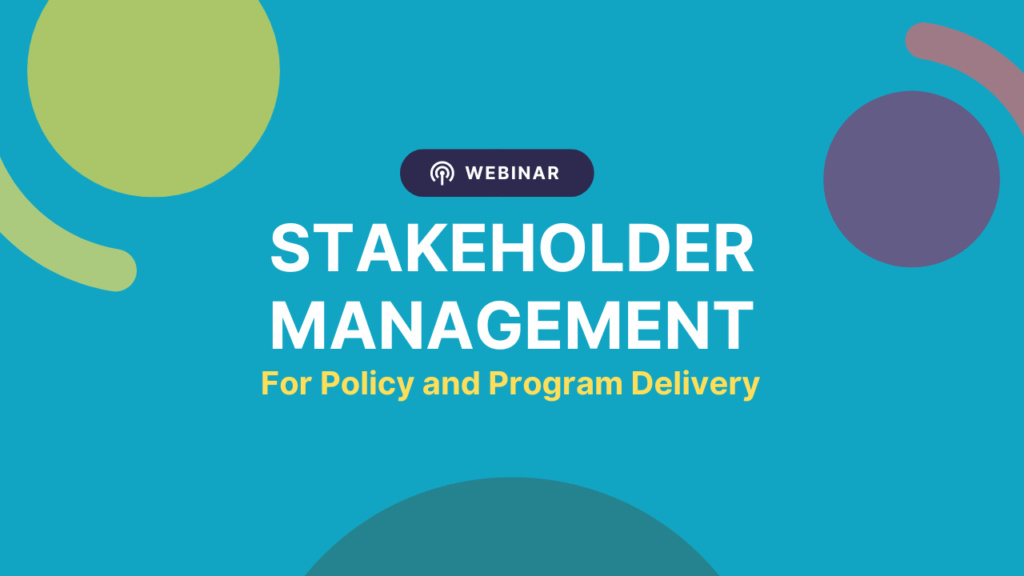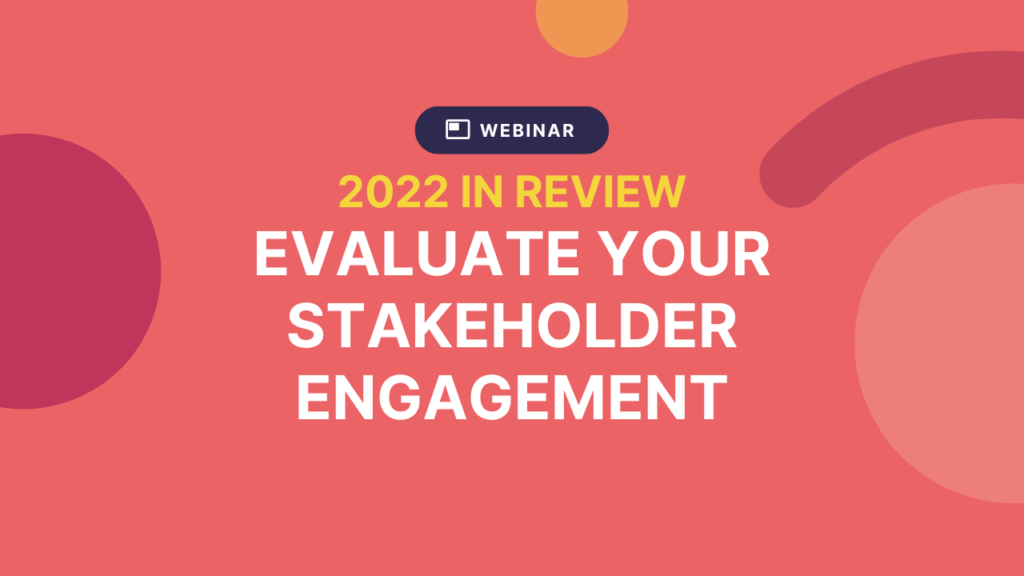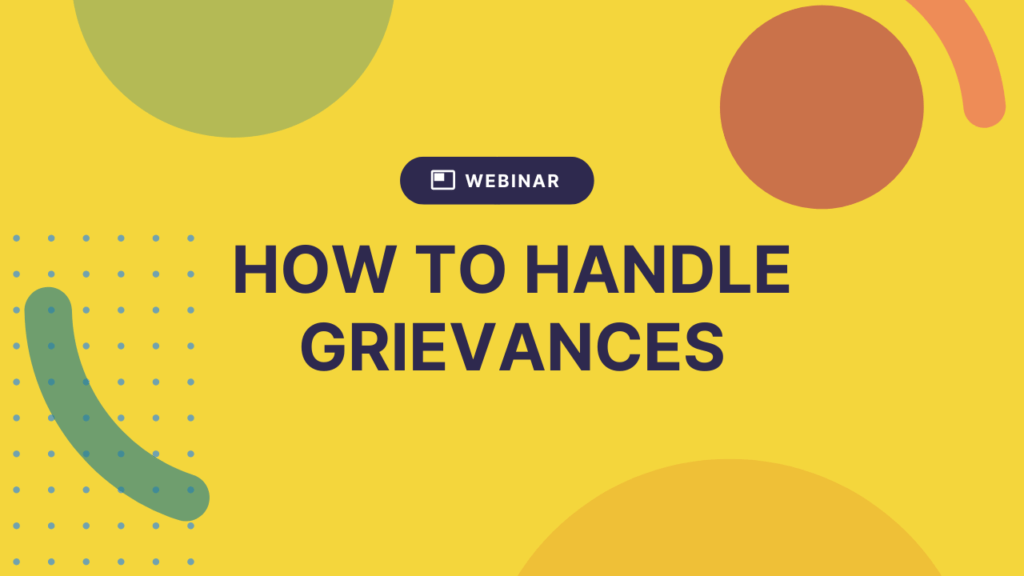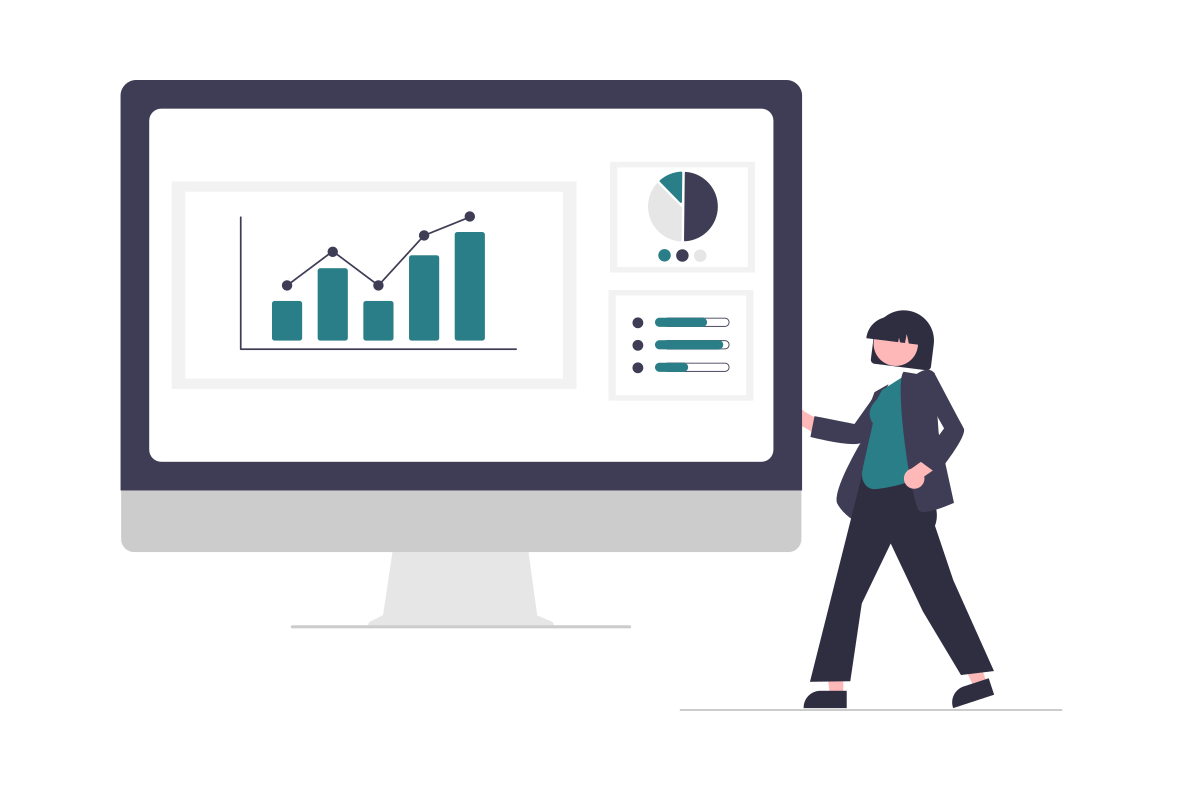6 Ways Stakeholder Management Software Delivers ROI
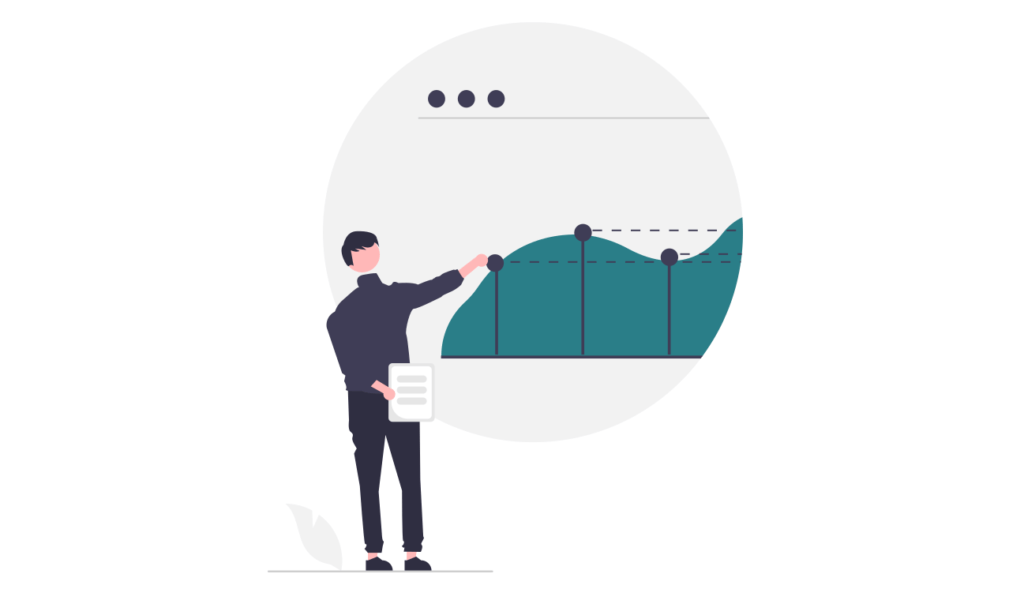
Considering new stakeholder management software but not sure if it’s worth it? Or need to convince your team that it’s time to upgrade your tools?
In order to make a case for stakeholder management software at your company, it can help to discuss it in terms of ROI.
How much will the software cost? And how much will you stand to gain? It’s a relatively simple question at first glance, but a lot goes into the potential costs and benefits of your stakeholder management software. And the numbers can vary considerably between organizations.
So, let’s unpack some potential considerations to help you calculate an ROI you can use to make a decision — or present to your company’s decision makers.
Stakeholder Software ROI: Tangible & Intangible Benefits
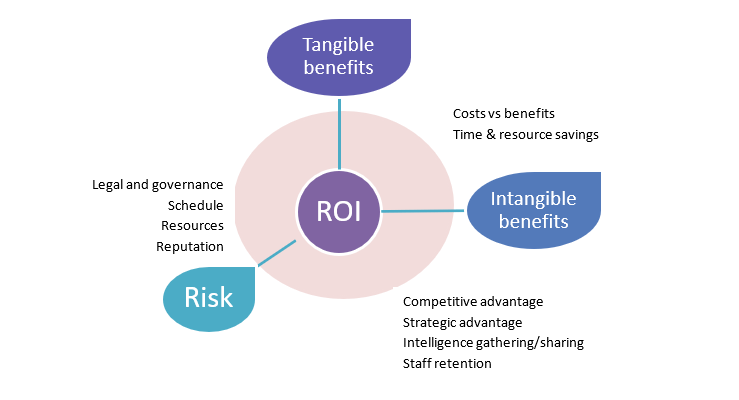
Before we get into the specific ways stakeholder software might deliver ROI, it’s worth noting that ROI in stakeholder engagement or stakeholder management isn’t as straightforward as some other sectors.
Normally, return on investment (ROI) is about the ratio of benefit to expense. But many of the benefits that come from a good stakeholder process (and tools) are intangible. Meanwhile, the risks of not engaging or consulting adequately tend to increase over time. So, to properly assess ROI, you need to consider both short term and long-term impact.
Some examples that help demonstrate intangible benefits include:
- A property development company might be able to secure approval for a competitive project (worth $20m) because they could show (in their stakeholder software) a clear and credible record of meaningful community engagement
- A government agency might save weeks of time spent handling data and analyzing submissions (translating to $10K+ in wages) after switching their submissions management process to an online platform — something that will benefit all their future consultations
- A mining company might enhance their reputation and enable strategic advantages by better tracking and reporting on key relationships or issues across all sites
Six Ways Stakeholder Management Can Deliver ROI
1. Save Time
It’s really clear that the most precious resource we all have is time.
– Steve Jobs
For many organizations, the biggest expense (and therefore ROI opportunity with stakeholder software) is staff wages. Anything that helps your teams be more efficient, effective, and productive can deliver significant time savings.
For example, some specific ways your staff can save time with Simply Stakeholders include:
- Easily add and update contacts and records
- Automatically track issues and tag stakeholders
- Plan and manage engagement activities and follow up tasks to ensure nothing slips between the cracks
- Integrate email, SMS, and survey functionality to efficiently communicate, add data, and collect feedback
- See a full history of all interactions in one place (each linked to the relevant contact)
- Easily access relevant information via smart search functions that allow you to drill down into your data
- Easily create custom stakeholder lists for various activities, events, and communications — and always have a shared, up-to-date list at hand (no manual updates required)
- Easily generate reports
And of course, Simply Stakeholders is built to be easy to learn and use. It has everything you need in one place and isn’t cluttered with tools that don’t add value to the stakeholder management process. It’s intuitive and easy to navigate, making it quick to onboard new staff — and quick to do daily tasks.
On that note, it’s also important to consider the time your staff might need to invest upfront into learning a new piece of software. So, you might not see time savings immediately — but if your new stakeholder management system is simple to use and offers great training resources, it shouldn’t take long for your team to get comfortable and more efficient with the software.
2. Harness Knowledge
For an increasing number of organizations, knowledge is closely linked to profit. Stakeholders are often a major source of that knowledge, providing feedback and insights that unlock greater savings, resources, ideas, and opportunities.
Simply Stakeholders’ stakeholder management software can help you harness more stakeholder knowledge through:
- Data collection – Easily gather data and feedback via integrated forms and surveys, linking any input to the relevant stakeholder contact record
- Analysis – Advanced analysis tools (like our AI sentiment analysis) helps you get insights into issues, trends, and your progress towards objectives
- Long-term relationship history – Retain a long-term historical record of your key stakeholder relationships, ensuring that this organizational knowledge is not lost when key team members leave
3. Build Profitable Relationships

It’s not just knowledge that can deliver profits, but relationships, too. Stakeholder management software can help you build stronger relationships with key stakeholders, encouraging them to remain long-term referral partners, customers, and supporters.
The right tools can help you:
- Better understand who you stakeholders are – Through stakeholder analysis and mapping
- Tailor your communications – Use stakeholder mapping to segment your stakeholders into groups and deliver communication that’s relevant to their issues, interests, and preferences
- Increase communication frequency – Efficient communication tools make it easier to send regular communications
- Talk to the right people at the right time – Clearly see who you’re engaging with and who you aren’t engaging with so you can be more strategic with your communications
4. Consolidate Software Subscriptions
The cost of software subscriptions can really add up —- especially in larger organizations with multiple licenses. Although investing in stakeholder management software does mean paying for another tool, it can sometimes save you money, too. The right software could mean your team has one subscription with everything they need in one place. And in some cases, they may be able to unsubscribe from other paid tools, like CRMs, email/SMS tools, task management software, and survey tools.
That said, if you’ve been using free or low-cost tools (like email and spreadsheets) to manage and engage with stakeholders, this benefit may not be as relevant to you (though the other points will be highly relevant!).
5. Reduce Risk
Every organization and project comes with risks that may lead to expensive delays, errors, loss of reputation, lost product, reduced sales, high staff turnover, and more. Effectively managing stakeholders can help to mitigate some of these risks by identifying them earlier — and taking steps to avoid (or reduce the impact of) an issue when it comes up.
Stakeholder management software can support this through stakeholder analysis, two-way communication, feedback tools, and insights into the data.
6. Improve Compliance
Stakeholder software can help organizations comply with rules and regulation — which can help them avoid paying hefty non-compliance fines.
In some jurisdictions (e.g. California, Canada, and Europe), you’ll find very specific requirements for how personal information can be stored. For example:
- It must be stored within that country/jurisdiction
- It must be encrypted both in transit and at rest
- You need to be able to easily provide a copy of all information you have on a person — and be able to delete it, if requested
All of the above requirements are near-impossible to achieve if you are keeping records in spreadsheets. But inside Simply Stakeholders, you can choose who has access to what information, who can update it, where it’s stored — and a whole host of other security/privacy features.
Most importantly, stakeholder software allows you to keep every interaction with stakeholders in one place so that you can record any complaints, corrective actions, and commitments. This means that in just a few clicks, you can generate a report that demonstrates to auditors that your organization is meeting its requirements to consult with stakeholders.
Calculating Your Stakeholder Management Software ROI
To calculate your potential ROI for your stakeholder management software, we recommend basing your numbers on an entire year. This is because the first month is likely to have higher costs (due to the initial set up and time spent learning the software) than the rest of the year.
Here is a 3-step process with formulas you could base your calculations on, depending on the factors that are relevant for your organization:
Step 1: Calculate Your Expected Investment/Costs
Your expected investment for the first 12 months should include:
| How to figure out your numbers ⤵ | |
|
One-time set up fees + |
Find out your one-time set up fees. These depend on the size and complexity of the set up and migration (reach out to the Simply Stakeholders team for a quote |
|
Monthly license fees + |
Multiply your number of users x monthly rate x 12.
Simply Stakeholders’ license fees are based on the number of account users, making it easy to scale up as needed (see our pricing information here) |
|
Initial training and onboarding staff costs + |
Multiply your number of users x average hourly wage x 2. Allow ~2 hours per user to get familiar with Simply Stakeholders. |
| Ongoing staff usage costs |
Multiply your number of users x average hours using the software per month x average hourly wage x 12. Most users will spend an average of 2-3 hours inside their account each week (but this will depend on their role and how heavily they need to use the product) |
| = |
Total investment for your first year |
Step 2: Calculate Your Expected Savings/Income
Your expected savings or income for the first 12 months should include:
| How to figure out your numbers ⤵ | |
|
Cancelled software subscriptions + |
Add up the total cost of software or licenses (if applicable) that you would no longer need to pay for during the 12 month period. This may include bulk email outreach tools, SMS tools, task management, or survey tools that you would no longer need due to your stakeholder software. |
|
Ongoing staff time savings + |
Multiply your number of users x average hours currently completing engagement tasks per month x average hourly wage x 12.
Estimate the total amount of time staff currently spend doing stakeholder management tasks that they would no longer do outside of your new stakeholder software (or automate using the software) |
|
Project effectiveness savings + |
Add up the cost of extra staff/contractor wages, lost sales, reputation impact, or something else relevant to your operations over a 12 month period. Estimate the potential costs if each of your project(s) in the next year were somewhat delayed or impacted by issues that could be avoided with better stakeholder engagement or management |
|
Compliance savings + |
Add up the total likely cost if a security/recordkeeping issue came up during the 12 month period. Consider the potential cost of a security breach due to insecure systems or a failed audit due to insufficient stakeholder records. This may include regulatory fines, loss of reputation, and project delays. |
| Opportunities |
Add up the total likely value you could generate from engaging more regularly and effectively with a broader group of stakeholders during the 12 month period. Consider the value your organization could generate through better relationships with partners, customers, and supporters. If you gained extra insights from a broader range of stakeholders, over a longer period of time, how could this lead to new opportunities, savings, and more profitable decisions? |
| = | Total savings/income for your first year |
Step 3: Calculate Your Expected Return
Your expected return on your investment for the first 12 months is based on:
| How to figure out your numbers ⤵ | |
|
Total expected income/savings – |
Refer to the total number in step 2. |
| Total expected investment/costs | Refer to the total number in step 1 |
| = | Total expected ROI in the first year |
To calculate your ROI as a percentage, you can use the following formula:
|
(Total Expected Income/Savings – Total Expected Investment/Costs) _______________________________________ Total Expected Investment/Costs |
x 100 |
Important Notes About The Above ROI Formulas
One thing to note about the above formulas is that costs are typically higher during the first year due to set up fees and extra time for staff to become familiar with the product.
The longer you use your stakeholder management software (as long as it’s still working for you), the greater your potential return on investment. But the main reason your ROI will continue to improve is that over time, your software will hold increasingly valuable data and insights that can help you:
- Identify patterns that unlock profits and opportunities
- Build stronger, deeper relationships with stakeholders
- Re-engage with stakeholders on multiple projects and campaigns
- Become more effective with every project and campaign
Of course, another important note is that the above calculations are based on a lot of hypotheticals. No company knows in advance the exact compliance issues and risks they’ll run into over a 12-month period (with or without changing their software). And nobody can know for sure what profits and savings their stakeholder relationships will deliver. So, whatever number you get at the end, it’s a good idea to allow a lot of variance within your calculations — and potentially reduce that final number to keep your estimates conservative.
If you still end up with a positive ROI for your first year, you can be confident that you have a solid case for investing in stakeholder software!
Get Started With Simply Stakeholders

Ready to explore Simply Stakeholders for your organization? View our plans and pricing to choose the plan that best fits your needs — or contact our team to book a demo.
We look forward to supporting you and your team to get maximum ROI from your stakeholder software!








